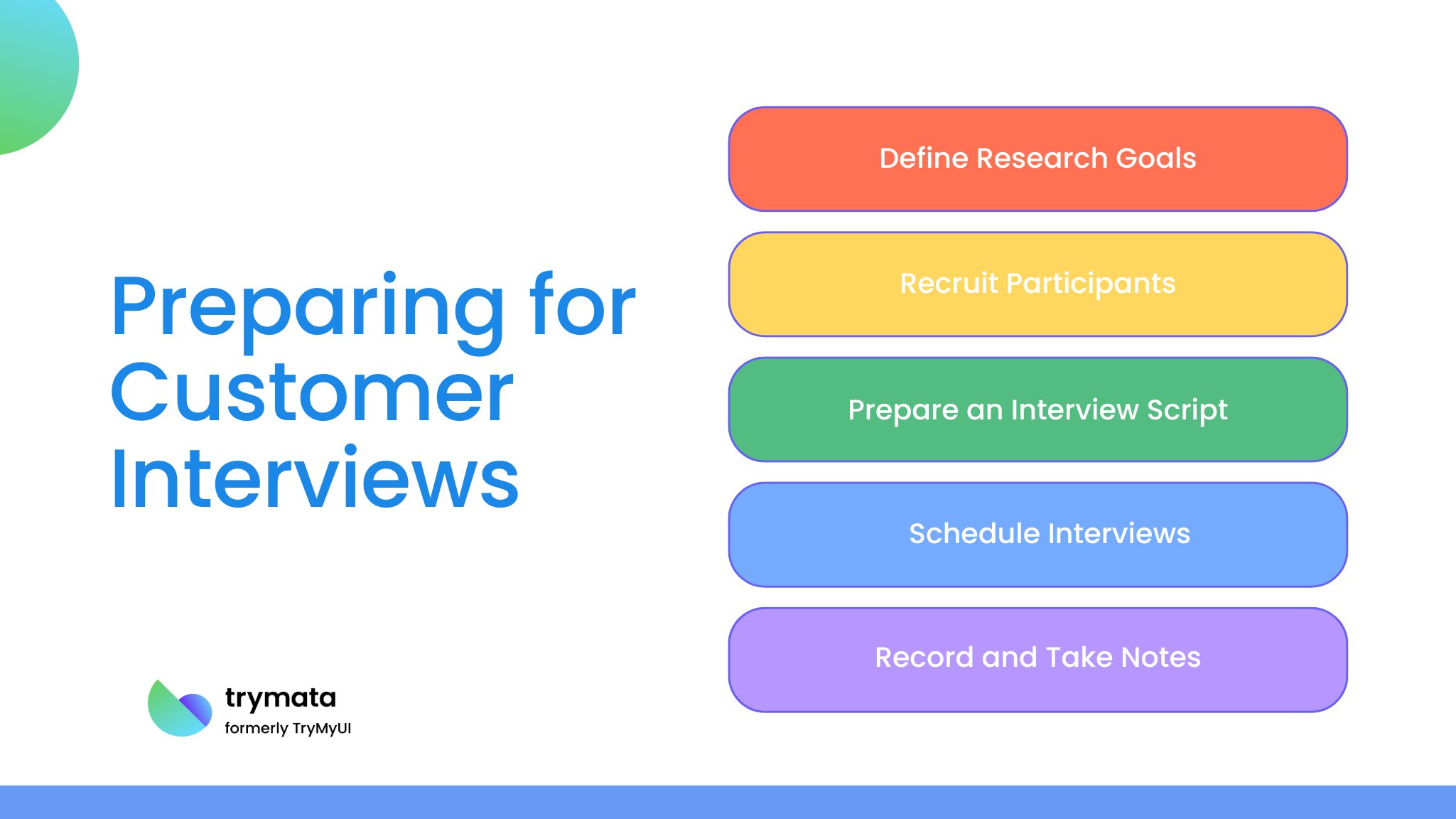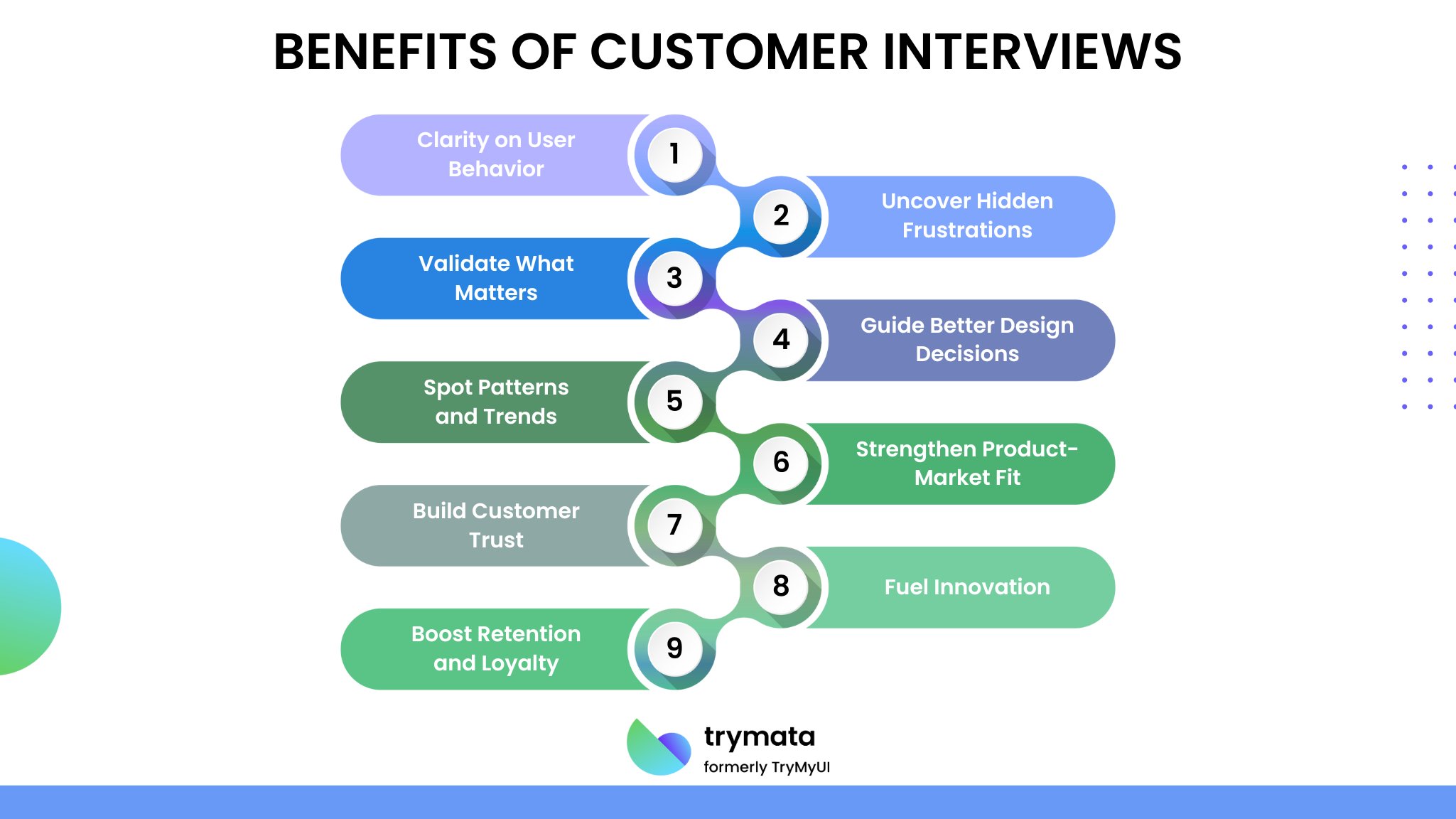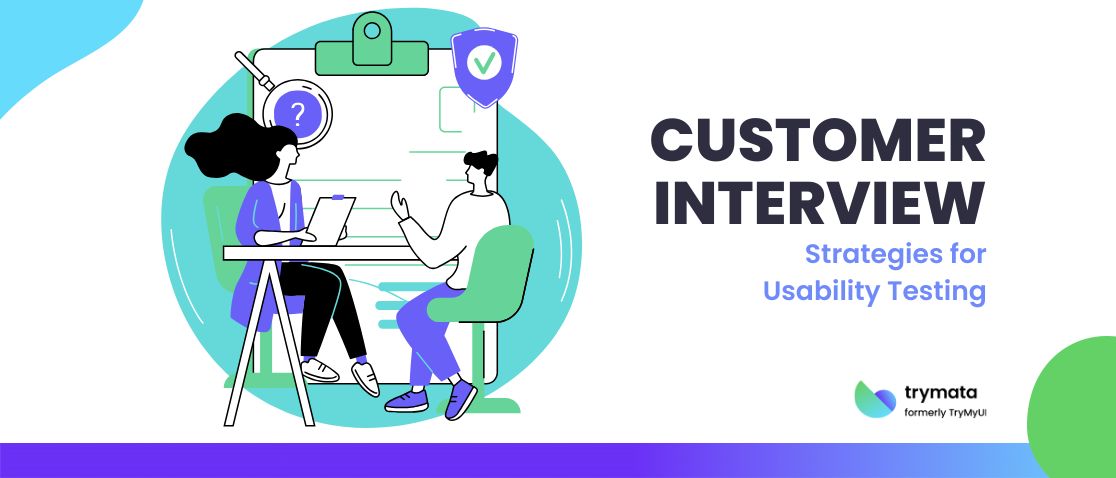Understanding customers is the foundation of a successful product or service. Customer interviews provide direct insights into user needs, experiences, and pain points, making them invaluable tools in usability testing.
By engaging with potential, paying, or prospective customers, businesses can gather valuable insights to refine their products.
This blog explores the importance of customer interviews and best practices, as well as their influence on product development and the overall customer experience.
What is a Customer Interview?
A customer interview is a qualitative research method where businesses interact directly with potential customers, paying customers, or prospective customers to understand their experiences, expectations, and pain points.
Unlike general interviews, customer interviews focus on gathering valuable insights into how users interact with a product or service, their needs, and potential solutions to enhance their experience.
Why Customer Interviews Matter in Usability Testing?
Usability testing is essential for designing user-friendly products and services. Interviewing customers helps product teams understand how real users interact with a product and identify areas for improvement. Here’s why customer research is crucial in usability testing:
- Identify Pain Points: Discover customer pain points and usability challenges in the product experience.
- Improve Product Development: Validate potential solutions before implementing changes.
- Enhance Customer Satisfaction: Ensure products align with customers’ needs and expectations.
- Gather Diverse Perspectives: Capture insights from a broad customer base, including small business owners and enterprise users.
- Collect Qualitative and Quantitative Data: Combine interview notes with survey results to gain a comprehensive understanding of the user experience.
Preparing for Customer Interviews
A solid plan is essential before conducting a customer interview. Proper preparation ensures that you recruit participants, ask customer interview questions, and gather meaningful insights to improve product development and customer experience.

1. Define Research Goals
Clearly outline what you hope to achieve from the interviews. Are you looking to understand a specific feature, improve customer experience, or identify usability issues?
2. Recruit Participants
Identify your target audience based on ideal customers, small business owners, or early-stage startups. You can recruit through email outreach, social media, or focus groups.
3. Prepare an Interview Script
A well-structured interview script ensures you stay on track while allowing flexibility to dig deeper when necessary. Avoid leading questions that may bias responses.
4. Schedule Interviews
Determine the format (in-person interviews, video calls, or phone calls) and schedule interviews at a convenient time for participants.
5. Record and Take Notes
Use recording tools to record notes or take interview notes to accurately capture the conversation.
How to Conduct a Customer Interview
How you conduct customer interviews can significantly impact the quality of the insights gathered. A well-executed interview fosters an open conversation where participants feel comfortable sharing their honest thoughts and experiences.
- Start with Open-Ended Questions: Encourage participants to express their thoughts freely using open-ended questions. Instead of asking, “Do you like this feature?” ask, “How do you feel about using this feature?”
- Observe Body Language: Pay attention to body language for in-person interviews to assess users’ reactions and emotions.
- Encourage Specific Stories: Ask participants to share specific stories about their experiences to uncover deeper insights. For example, “Can you describe a time when you struggled with our product?”
- Use Follow-Up Questions: When participants mention pain points, ask follow-up questions to further explore the issue.
- Avoid Bias and Leading Questions: Frame questions neutrally to get objective answers and avoid influencing responses.
- Capture Qualitative and Quantitative Data: When possible, collect qualitative research insights from conversations and quantitative data.
Analyzing Customer Interview Data
After interviewing customers, data analysis is crucial for uncovering patterns and validating assumptions.
1. Organize and Categorize Responses
Sort participants’ responses into themes based on common customer pain points, usability issues, or potential solutions.
2. Identify Key Trends
Look for recurring patterns in interview notes, such as:
- Users are struggling with a specific feature.
- Customer problems affecting multiple participants.
- Unexpected insights that could shape product development.
3. Balance Qualitative and Quantitative Data
While interviews provide qualitative data, consider integrating survey questions to gather quantitative data for a more comprehensive view.
4. Summarize Findings
Create a structured report with the following:
- Key takeaways from interviews.
- Specific stories that highlight user challenges.
- Potential solutions for product teams.
Best Practices for Customer Interviews in Usability Testing
Following best practices ensures that your customer interviews yield meaningful and actionable insights. Here are some key guidelines for conducting compelling interviews.
- Recruit a diverse range of participants to gather a variety of perspectives.
- Use a mix of survey questions and open-ended questions.
- Ensure a comfortable environment to make participants feel at ease.
- Ask follow-up questions to dig deeper into responses.
- Avoid asking multiple questions at once to get a specific answer.
- Keep interviews conversational and natural.
- Use free templates for consistency.
- Record interviews (with permission) for reference.
- Analyze both qualitative and quantitative data for a complete understanding.
How Customer Interview Helps to Improve Customer Satisfaction and Product Development?
Customer interviews provide valuable insights that enhance the customer experience and inform product development. Understanding your customers ensures that your offerings align with their expectations and needs.
- How interviewing people benefits your business.
- Enhances usability by addressing customer pain points.
- Informs product teams about real user needs.
- It helps early-stage startups refine their offerings.
- Offers new insights on improving the customer experience.
- Builds customer loyalty by showing that you value customer feedback.
Benefits of Customer Interviews
Why Customer Interviews Are Worth Your Time? Customer interviews bring more than just feedback—they offer clarity, direction, and ideas that can shape your product in meaningful ways. Here’s what makes them so valuable:

1. Clarity on User Behavior
Understand how real users interact with your product, what they’re trying to achieve, and where they get stuck.
2. Uncover Hidden Frustrations
Identify pain points that users might not mention in surveys but naturally bring up in conversations.
3. Validate What Matters
Test whether your ideas and features solve user problems or if they need a rethink.
4. Guide Better Design Decisions
Use firsthand insights to refine UX and improve overall usability.
5. Spot Patterns and Trends
When multiple users mention the same issue, it indicates what needs to be fixed or prioritized.
6. Strengthen Product-Market Fit
Learn whether your product meets the needs of your intended audience—and how to get closer if it doesn’t.
7. Build Customer Trust
Interviewing users demonstrates that you value their input, which helps build stronger, more meaningful relationships.
8. Fuel Innovation
Conversations often spark ideas for new features, improvements, or entirely new use cases.
9. Boost Retention and Loyalty
A product shaped by honest user feedback tends to satisfy more customers, and satisfied customers stick around.
Conclusion
Customer interviews are powerful tools in usability testing. They help businesses understand their audience, uncover pain points, and improve product development. By preparing effectively, asking open-ended questions, and analyzing qualitative data, companies can make informed decisions that enhance the customer experience.
Whether you’re a small business owner, a product team member, or part of an early-stage startup, conducting a good customer interview will provide the valuable insights needed to create better products and ensure customer satisfaction.




